I always loved looking at flowers, thinking about dinosaurs, being outside with the trees, the grass, the birds and squirrels. We are communal beings, we want to belong and connect. As a child, I rarely felt a strong sense of belonging with other people. The land, plants and animals, always helped me feel a sense of connection that was eternal, beyond me. And of course, of course all the life surrounding me could feel and sense and speak. Maybe not in quite the same way of human words or sight or hearing, but the communion, the innate wisdom, was always apparent.
As I delved deeper into biology, this sense of kinship and communication with the whole living world never left me. Instead, the unveiling of life at the molecular level left me in absolute awe and aroused a vibrant feeling of connection and kinship with my fellow beings. All cells, all life on this planet operate with the same foundational mechanisms grounded in cooperation, rather than competition.
Biology at the molecular level reveals a core truth of all wisdom teachings throughout human history: that all life is one, connected and unified. Not merely in the sense that we’re all connected in food chains, but in a way that goes all the way down to the most fundamental aspects of how we operate.
The way our genes are translated into proteins and the metabolic processes that give us energy are all more the same than they are different. Many of these mechanisms have remained almost unchanged since the earliest stages of life on this planet.
Life is unified in its functions through space and time. It is a unified force taking on a multitude of glorious forms. Including us. When I consider life this way, my heart opens and I am sure that our species, which seems so far astray from our most deeply sustaining connections to the rest of life, has a purpose in this unfolding mystery.
The study of living systems brings us to the limits of what our human minds can comprehend, it brings us into intimacy with the mystery. The volume of molecular interactions and forms are staggering, almost unimaginable, in their complexity. Beautiful, unspeakably enigmatic.
Yet, in popular discourse, it’s too often boiled down to some overly simplified mechanisms that center largely on humans, largely ignoring our microbial ancestors and symbionts. As I said before, the study of life deepened my sense of kinship, my sense of unity and gratitude for all life.
I wonder if I can share my reverence and awe with you, and reveal some of the unifying mechanisms of life that shook me awake from my sleep of separation. If I can, I believe there is something to be gained for us both. Let’s begin in the beginning…
Boundaries
The smallest unit of life, the cell, is defined by a boundary: the membrane. It is postulated that the earliest forms of life on our planet were simply membranes that contained a few primordial cycles of biochemical transformation. The cell membrane is a vanishingly thin dynamic layer, just 7.5-10 nanometers in depth (1/10,000th of a human hair), that separates the surrounding environment from the inside of the cell. At first glance it may appear simple, but this selective boundary is a defining feature of life.
The membrane creates a barrier that contains the biochemical processes of a cell, cycles that transform elements and light into energy and complex molecules. Though it establishes a divide between inner processes and outer environment, the membrane must be permeable. If a cell cannot engage in active continuous exchange with its surrounding environment, it will die. At the same time, if the boundary is too open, the cell loses its state of differentiation to dissolve and merge with its surrounding environment: this too is death. Thus, the function of a cell membrane is to be a selectively permeable barrier. Life is defined by, and thrives on, boundaries that allow connection, communication, giving and receiving.
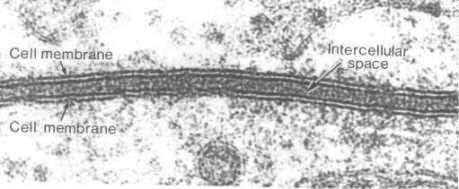
To understand the nature of cell membranes and how they came to into form, we must understand water. Ancient wisdom teachings identify water as the origin of life, as the primordial oceanic abyss from which all life arose. Creation myths describe gods shaping water or emerging from water to create life.
In modern times, we have learned that water has remarkable physicochemical properties that indeed gave rise to all life on this planet. In chemistry terms we all know the formula H2O; however, water doesn’t actually stay in this static state. We can’t always tell just by looking at it, but liquid water is in constant motion. Even within a surface that appears still, there is constant movement. This movement is an atomic dance, an evershifting exchange of electrons. Without this dance there is no life as we know it.
The dance of electrons
First, let’s consider hydrogen. Hydrogen is the simplest element made of just two particles: a single proton (positive) orbited by a single electron (negative). Like a planet and its moon. Next, we must consider oxygen: a hungry element, one of the most hungry. In technical terms, it’s highly electronegative, which means that it craves electrons.
This craving is caused by a sort of imbalance in the way its own electrons surround it; the organization of electrons isn’t quite optimal by the rules of our universe. So, oxygen attracts electrons to attain that optimal configuration. At every level of existence, the ‘behavior’ of all things is driven by expression of an underlying harmony.
When we put it all together, in H2O, oxygen attracts the electron from each of the two hydrogen atoms to attain balance. The strong attraction of these electrons by oxygen means they spend more of their time in orbit around the oxygen than their hydrogen ‘home’. With the additional negatively charged electrons around it, oxygen takes on a slight negative charge itself. And because it’s own electrons are spending so much time away from it, hydrogen becomes slightly positive (see image below).
A simple and familiar law of the universe is that negative and positive are attracted to each other. So, when you put it all together, that slight negative charge on oxygen and that slight positive charge on hydrogen makes all the water molecules attracted to each other. This mutual attraction means that in a single droplet of water all the countless water molecules are constantly exchanging electrons. Water isn’t just H2O. It’s a constant dance of oxygen losing and gaining electrons.
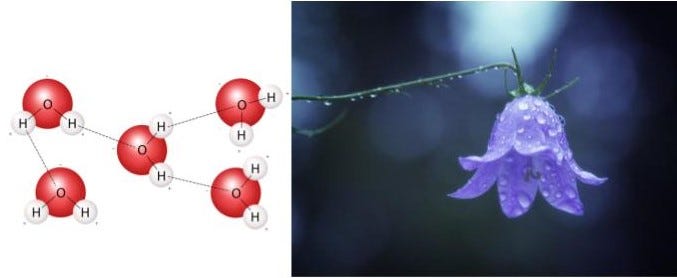
This constant dance is called ‘hydrogen bonding’ and it makes life as we know it possible. The polarity of water is the basis of its role in this unfolding act of creation.
Spontaneous formation
The dance of hydrogen bonding causes water to have profound effects on any other molecules it comes into contact with. We witness this all the time in our lives. Think about the way fat or oil won’t mix with water, or the way soap bubbles form. The same chemistry is at play in cell membranes.
Soaps and detergents are amphipathic molecules, with one end that is attracted to water (hydrophilic=water loving) and another end that repels water like oil (hydrophobic=water fearing). The hydrophilic end has electrons that can play in the hydrogen bonding dance, while the hydrophobic end has a tight hold on all its electrons, so it’s repelled by water’s natural polarity.
These amphipathic molecules spontaneously arrange in a way that is harmonious for both ends: so the hydrophilic heads point out to face the water, while the hydrophobic tails remain hidden in the interior. This arrangement causes them to create a space inside that is distinct from and free from the surrounding water.
In this way, water caused cell membranes to form. All cell membranes are made of similarly amphipathic molecules called phospholipids, which are made of a hydrophilic phosphate head and a hydrophobic fatty-acid tail. When immersed in water, they spontaneously arrange so that the hydrophilic end interacts with the water and keeps the hydrophobic end protected. When there are enough of them in water, they naturally form a lipid bilayer. And this is our boundary.
Nourishing exchange
This simple interaction, of hybrid hydrophilic/hydrophobic phospholipids in water, established a permeable boundary that remains vital to every living cell today. The first membranes provided a primordial womb for the transformational processes of life to develop and arrive at a reproducible harmony.
Though the membranes have variations in their specific components, with different types of phospholipids and the incorporation of cell walls (in plants and bacteria), the overall chemistry has remained unchanged across 3.7 billion years of life in its staggering multitude of forms; including you and all the microbes that comprise your body.
It is postulated that the earliest forms of life on our planet were simply membranes that contained a few cycles that extracted energy and molecular building blocks for the polymers that form living systems. Over the aeons the cycles became more complex and intertwined. Communities of discrete organisms formed. All processing, generating, exchanging matter and energy through their membranes in increasingly complex networks to eventually become multicellular life. The familiar plants and animals we observe in our day-to-day lives all have their origin in these primordial cycles of transformation, and still carry them out today, in you and all around you, in this very moment.
All living beings engage in active dynamic exchange with their environment. The membrane facilitates these exchanges between the cell and its surroundings. Phospholipids provide the foundational structure, their properties produce a fluid layer that some small molecules can traverse passively.
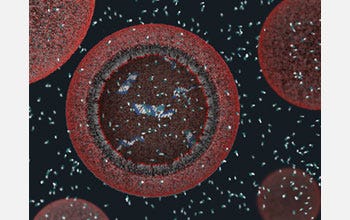
However, most of what a cell needs to survive requires the use of proteins embedded in the membrane. These proteins form various gates and channels to accommodate the movement of larger molecules and charged particles (ions) into and out of the cell. The movement of molecules across membranes allows the cell to take in nutrients, generate energy, release ‘waste’ and communicate with the environment, including other cells.
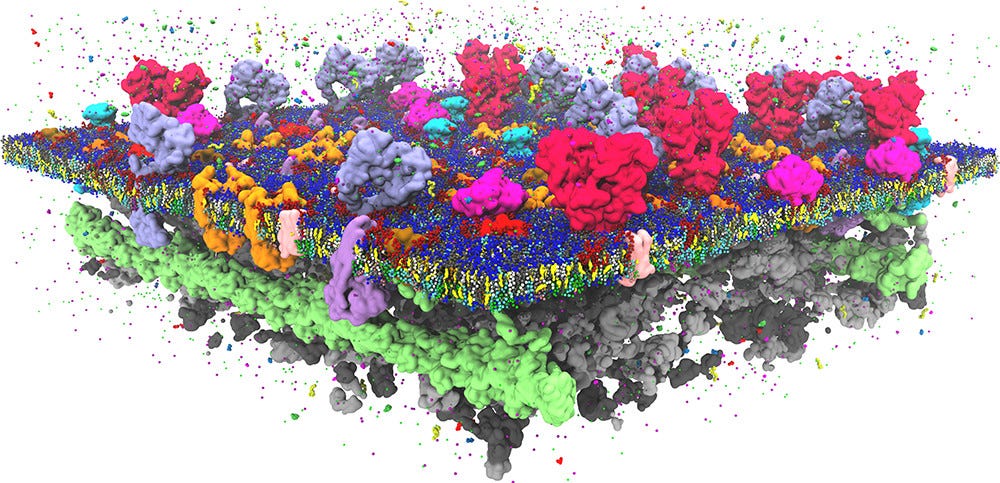
Proteins associated with the membrane also take the form of receptors, structures that detect certain molecules and relay a signal to the inside of the cell to affect its behavior. All of this happens through a semi-fluid barrier that is 1/10,000th the thickness of a human hair. The cell membrane, a thin veil of differentiation, is intensely dynamic, staggeringly complex, and perfectly suited to its array of functions.
Origins
Of course, all the details of how exactly this all began are a mystery; that’s what makes it fun and fascinating to contemplate. How did phospholipids first come into being? How were there enough of them to form the very first membranes? And how did those membranes allow the passage of molecules if there wasn’t an active genome to encode the proteins that form channels and gates?
And at the heart of it all is the question: was it truly random and spontaneous?
Whenever I consider the elegance and complexity of the molecular systems that drive life, I don’t think it’s at all random. I feel that from the very beginning it was all an expression of an underlying organizing principle, some force that causes elements formed in stars to take on progressive levels of organization and complexity, eventually culminating in a multitude of sentient forms arising and dissolving in seemingly endless cycles of birth, life, death. Some call it Consciousness, Awareness, God, Shiva. Whatever name one may use, Life is The One playing with Multiplicity.
The formation of the membrane was the first act of separation, the first demarcation of inside and outside. Without this separation, there is no life, no multiplicity of forms. But, without a sustained connection between inside and outside, there is no life. Cells need nourishing exchange with their environment and other cells to carry out all their processes, to generate energy and transform molecules into various novel forms. There has never been a truly separate individual entity. And, at the molecular level, reactions are constantly taking place at staggering speeds. Here we perceive constant change, impermanence, too. Life is a unified process of transformation.
Becoming aware of the microcosm of life and its workings brings us into deeper intimacy with life, contemplating its mysteries is a portal to foundational truths, the divine. Principles sometimes held as transcending material reality and physical life are in fact constantly at play in every level of existence, right down to our cells. Life itself reveals to us timeless wisdom: the truth of our unity, our permeability, our impermanence. And we are life itself, we are this wisdom.







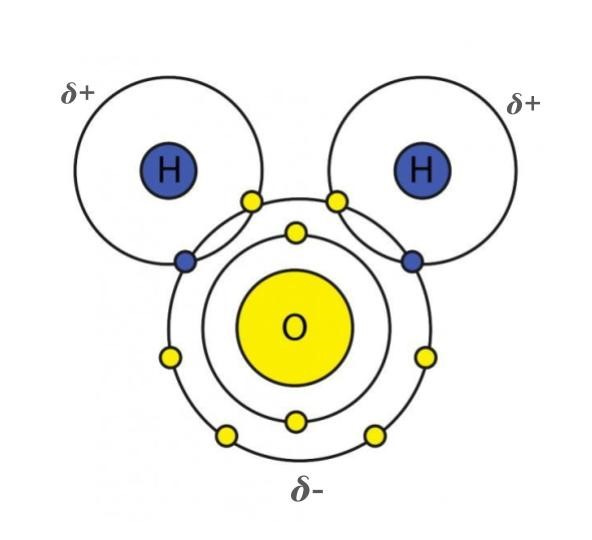
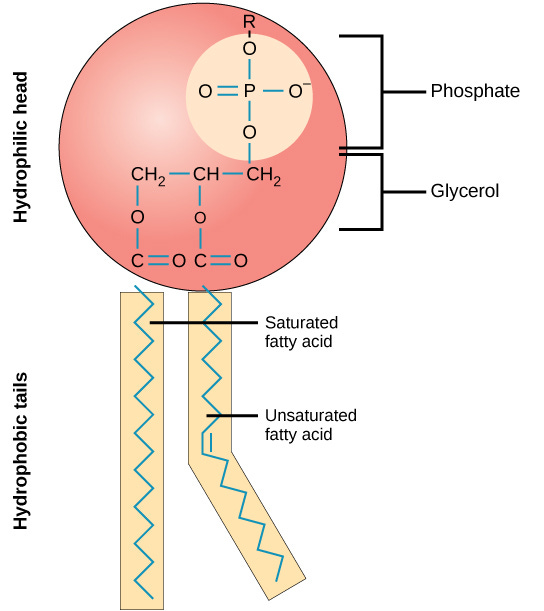
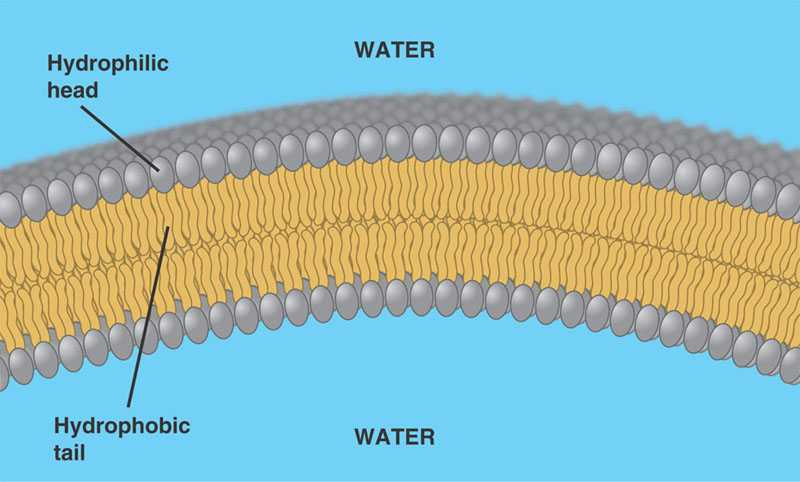
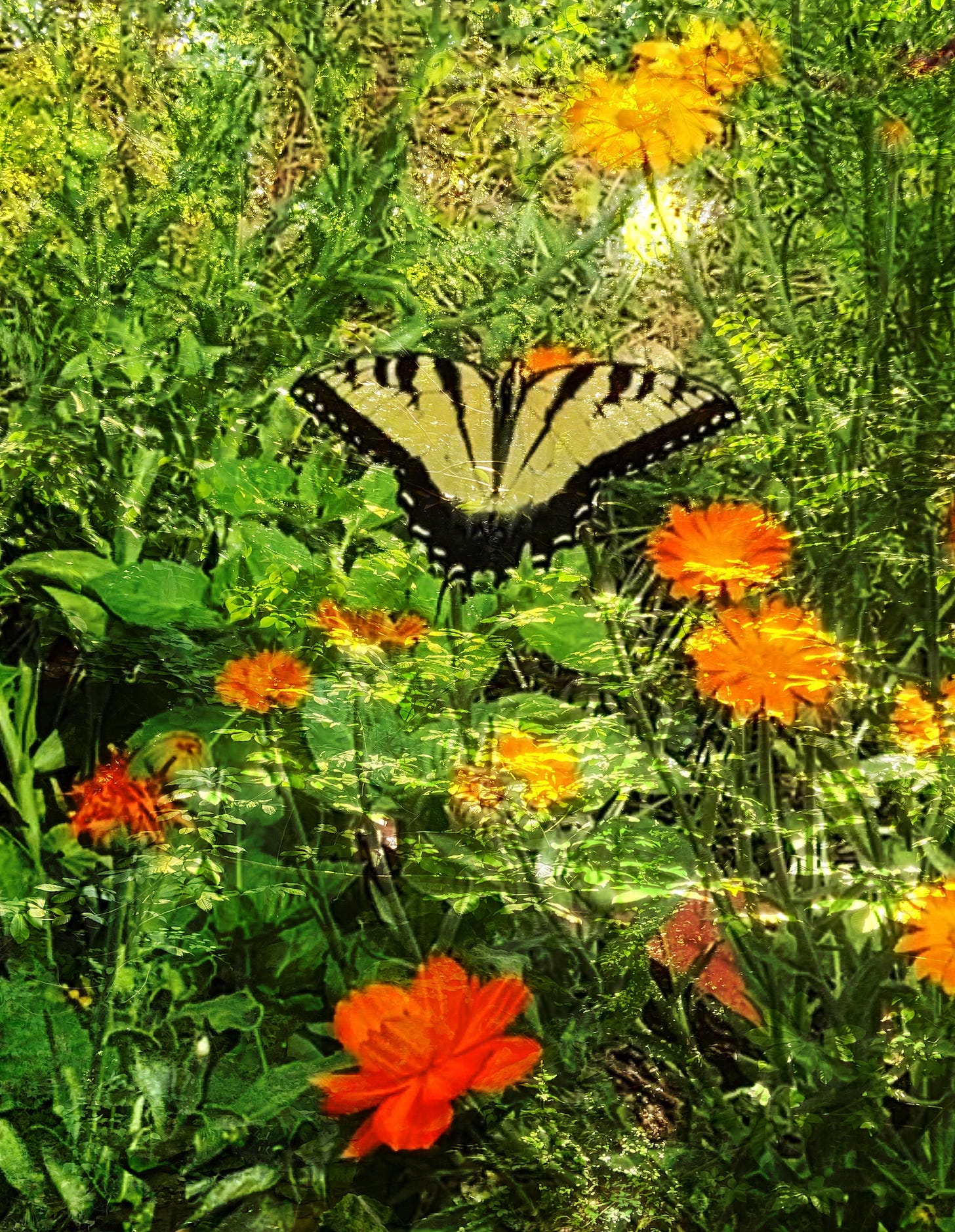

🙌🏻 I LOVE this weaving of beautifully potent information and wisdom!!!!! Portia, you are so cool :-) I want to know more of what you are exploring in your brilliance!
Thank you for this! Are you aware on Neil Theise’s _Notes on Complexity_ ?